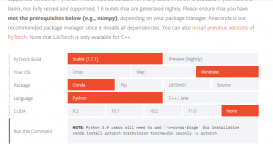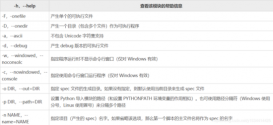1. pymysql的基本操作
|
1
2
3
4
5
6
7
8
9
10
11
12
13
14
15
16
17
18
19
20
21
22
23
24
25
26
27
28
29
30
31
32
33
34
35
36
37
38
39
40
41
42
43
44
45
46
47
48
49
50
51
52
53
54
55
56
57
58
59
60
61
62
63
64
65
66
67
68
69
70
71
72
73
74
75
76
77
78
79
80
|
# ### python 操作mysql import pymysql# ### 1.基本语法"""# (1) 创建连接对象 host user password database 这四个参数必写conn = pymysql.connect( host="127.0.0.1" , user="root" , password="123456" , database="db003" , charset="utf8" , port=3306 )# (2) 创建游标对象 (用来操作数据库的增删改查)cursor = conn.cursor()print(cursor)# (3) 执行sql语句sql = "select * from employee"# 执行查询语句返回的总条数res = cursor.execute(sql)print(res) # (4) 获取数据 fetchone 获取一条数据# 返回的是元组,里面包含的是第一条的完整数据res = cursor.fetchone()print(res)res = cursor.fetchone()print(res)res = cursor.fetchone()print(res)# (5) 释放游标对象cursor.close()# (6) 释放连接对象conn.close()"""# ### 2.创建/删除 表操作# conn = pymysql.connect(host="127.0.0.1",user="root",password="123456",database="db003")# cursor = conn.cursor()# 1.创建一张表sql = """create table t1(id int unsigned primary key auto_increment,first_name varchar(255) not null,last_name varchar(255) not null,sex tinyint not null,age tinyint unsigned not null,money float);"""# res = cursor.execute(sql)# print(res) # 无意义返回值# 2.查询表结构"""sql = "desc t1"res = cursor.execute(sql)print(res) # 返回的是字段的个数res = cursor.fetchone()print(res)res = cursor.fetchone()print(res)res = cursor.fetchone()print(res)"""# 3.删除表"""try: sql = "drop table t1" res = cursor.execute(sql) print(res) # 无意义返回值except: pass"""# ### 3.事务处理"""pymysql 默认开启事务的,所有增删改的数据必须提交,否则默认回滚;rollback"""conn = pymysql.connect(host="127.0.0.1",user="root",password="123456",database="db003")cursor = conn.cursor()sql1 = "begin"sql2 = "update employee set emp_name='程咬钻石' where id = 18 "sql3 = "commit"res1 = cursor.execute(sql1)res1 = cursor.execute(sql2)res1 = cursor.execute(sql3)# 一般在查询的时候,通过fetchone来获取结果res1 = cursor.fetchone()print(res1)cursor.close()conn.close() |
2. sql注入攻击
|
1
2
3
4
5
6
7
8
9
10
11
12
13
14
15
16
17
18
19
20
21
22
23
24
25
26
27
28
29
30
31
32
33
34
35
36
37
38
39
40
41
42
43
44
45
46
47
48
|
# ### sql 注入攻击import pymysql# (1) sql注入的现象''' 现象:绕开账号密码登录成功 ''''''user = input("请输入您的用户名>>>")pwd = input("请输入您的密码>>>")conn = pymysql.connect(host="127.0.0.1" , user="root" , password="123456",database="db005")cursor = conn.cursor()sql1 = """create table usr_pwd(id int unsigned primary key auto_increment,username varchar(255) not null,password varchar(255) not null)"""sql2 = "select * from usr_pwd where username='%s' and password='%s' " % (user,pwd)print(sql2)res = cursor.execute(sql2)print(res) # 1查到成功 0没查到失败# res=cursor.fetchone()"""select * from usr_pwd where username='2222' or 4=4 -- aaa' and password=''相当于 : select * from usr_pwd where 10=10; 绕开了账户和密码的判断 -- 代表的是注释;"""if res: print("登录成功")else: print("登录失败")cursor.close()conn.close()'''# (2) 预处理机制""" 在执行sql语句之前,提前对sql语句中出现的字符进行过滤优化,避免sql注入攻击 """""" execute( sql , (参数1,参数2,参数3 .... ) ) execute2个参数默认开启预处理机制 """""" 填写 234234' or 100=100 -- sdfsdfsdfsdf 尝试攻击 """user = input("请输入您的用户名>>>")pwd = input("请输入您的密码>>>")conn = pymysql.connect(host="127.0.0.1" , user="root" , password="123456",database="db005")cursor = conn.cursor()sql = "select * from usr_pwd where username=%s and password=%s"res = cursor.execute(sql , (user,pwd) )print(res)print( "登录成功" if res else "登录失败" )cursor.close()conn.close() |
3. sql增删改查
|
1
2
3
4
5
6
7
8
9
10
11
12
13
14
15
16
17
18
19
20
21
22
23
24
25
26
27
28
29
30
31
32
33
34
35
36
37
38
39
40
41
42
43
44
45
46
47
48
49
50
51
52
53
54
55
56
57
58
59
60
61
62
63
64
65
66
67
68
69
70
71
72
73
74
75
76
77
78
79
80
81
82
83
84
85
86
87
88
89
90
91
92
93
94
95
96
97
98
99
100
101
102
103
104
105
106
107
108
109
110
111
112
113
114
|
# ### python 操作mysql 数据库 (增删改查)import pymysql""" python 操作mysql增删改时,默认是开启事务的, 必须最后commit提交数据,才能产生变化 提交数据: commit 默认回滚: rollback"""conn = pymysql.connect(host="127.0.0.1",user="root",password="123456",database="db005")# 默认获取查询结果时是元组,可以设置返回字典; cursor=pymysql.cursors.DictCursorcursor = conn.cursor(cursor=pymysql.cursors.DictCursor)# 执行对mysql 的操作# 1.增"""sql = "insert into t1(first_name,last_name,sex,age,money) values(%s,%s,%s,%s,%s)"# (1) 一次插入一条res = cursor.execute( sql , ("孙","健",0,15,20000) )print(res) # 1# 获取最后插入这条数据的id号print(cursor.lastrowid)# (2) 一次插入多条res = cursor.executemany( sql , [ ("安","晓东",0,18,30000) , ("刘","玉波",1,20,50000) ,("张","光旭",0,80,60000) , ("李","是元",0,10,10) , ("高","大奥",1,20,80000) ] )print(res) # 返回插入的条数# 插入5条数据中的第一条数据的idprint(cursor.lastrowid)# 获取最后一个数据的idsql = "select id from t1 order by id desc limit 1"res = cursor.execute(sql)print(res)# 获取结果,返回元组res = cursor.fetchone()print(res["id"])# 默认元组 : (57, '高', '大奥', 1, 20, 80000.0)# 返回字典 : {'id': 51, 'first_name': '高', 'last_name': '大奥', 'sex': 1, 'age': 20, 'money': 80000.0}"""# 2.删"""sql = "delete from t1 where id in (%s,%s,%s)"res = cursor.execute(sql , (3,4,5) )print(res) # 返回的是3,代表删除了3条if res: print("删除成功")else: print("删除失败")"""# 3.改"""sql = "update t1 set first_name = '王' where id = %s"sql = "update t1 set first_name = '王' where id in (%s,%s,%s,%s)"res = cursor.execute(sql , (6,7,8,9))print(res) # 返回的是4,代表修改了4条if res: print("修改成功")else: print("修改失败")"""# 4.查"""fetchone 获取一条fetchmany 获取多条fetchall 获取所有"""sql = "select * from t1"res = cursor.execute(sql)print(res) # 针对于查询语句来说,返回的res是总条数;# (1) fetchone 获取一条res = cursor.fetchone()print(res)res = cursor.fetchone()print(res)# (2) fetchmany 获取多条res = cursor.fetchmany() # 默认获取的是一条数据,返回列表,里面里面是一组一组的字典;data = cursor.fetchmany(3)print(data)"""[ {'id': 9, 'first_name': '王', 'last_name': '是元', 'sex': 0, 'age': 10, 'money': 10.0}, {'id': 10, 'first_name': '孙', 'last_name': '健', 'sex': 0, 'age': 15, 'money': 20000.0}, {'id': 11, 'first_name': '安', 'last_name': '晓东', 'sex': 0, 'age': 18, 'money': 30000.0}]"""for row in data: first_name = row["first_name"] last_name = row["last_name"] sex = row["sex"] if sex == 0: sex = "男性" else: sex = "女性" age = row["age"] money = row["money"] strvar = "姓:{},名:{},性别:{},年龄:{},收入:{}".format(first_name,last_name,sex,age,money)print(strvar)# (3) fetchall 获取所有# data = cursor.fetchall()# print(data)# (4) 自定义搜索查询的位置print("<==================>")# 1.相对滚动 relative"""相对于上一次查询的位置往前移动(负数),或者往后移动(正数)""""""cursor.scroll(-1,mode="relative")# cursor.scroll(5,mode="relative")res = cursor.fetchone()print(res)"""# 2.绝对滚动 absolute"""永远从数据的开头起始位置进行移动,不能向前滚"""cursor.scroll(0,mode="absolute")res = cursor.fetchone()print(res)conn.commit()cursor.close()conn.close() |
4. mysql的数据恢复
|
1
2
3
4
5
6
7
8
9
10
11
12
13
14
15
16
17
18
19
20
21
22
23
24
25
26
27
28
29
30
31
32
33
34
35
36
37
38
39
40
41
|
# ### (1) 导入导出 不要加分号导出数据库1.退出mysql2.选择要导出的默认路径3.mysqldump -uroot -p db001 > db001.sqlmysqldump -uroot -p123456 db001 表1 表2 > ceshi01.sql导入数据库1.登录到mysql之后2.创建新的数据库# 注意:source db001.sql 后面没有分号";"3.source 路径+文件# ### (2) 如果服务器宕机了,有没有备份数据,如何恢复数据myisam: 直接新建一个数据库,然后把之前库中的三个文件,粘贴复制到新的数据库中,直接就恢复了innodb:# innodb 在只有frm和ibd文件的情况下,如何恢复数据;安装 MySQL Utilitieshttps://downloads.mysql.com/archives/utilities/ cmd中找到frm那个文件,执行如下命令:切换到对应目录,执行下面语句,不要加分号mysqlfrm --diagnostic ./文件目录/t1.frm查出建表语句,复制查询出来的建表语句在mysql中创建的新数据中使用(新建一个数据库,然后执行下面的建表语句)CREATE TABLE `innodb1` ( `id` int(11) DEFAULT NULL) ENGINE=InnoDB;#对已创建的表进行表空间卸载 删除ibd文件mysql> alter table innodb1 discard tablespace;把要恢复的idb文件替换进去#对已创建的表进行空间装载mysql> alter table innodb1 import tablespace;# ### (3) 配置linux下的编码集!includedir /etc/mysql/conf.d/ 客户端的修改# 设置mysql客户端默认字符集default-character-set=utf8!includedir /etc/mysql/mysql.conf.d/ 服务端的修改# 服务端使用的字符集默认为8比特编码的latin1字符集character-set-server=utf8# 重启数据库service mysql restart |
小总结:
|
1
2
3
4
|
-- 是mysql的注释 # 在sql注入那块用到了默认python连接mysql的时候,都是开启了一个事务,尤其是增删改,在改变数据的时候,一定要提交数据,不提交数据(默认回滚),不会真正的改变\s 看一下服务器的数据 |
5. sql语句优化
|
1
2
3
4
5
6
7
8
9
|
(1) 避免使用select *,(2) 不确定表大小时候,先用count(*)查下数据.(3) 创建表时尽量使用 char 代替 varchar(4) 定长的字段放前面,变长的字段放后面.(尽可能小的改变树状结构高度)(5) 组合索引代替多个单列索引 (由于mysql中每次只能使用一个索引,所以经常使用多个条件查询时更适 合使用组合索引)(6) 尽量使用短索引(小数据值)(7) 重复少的字段值不适合做索引,例:性别不适合(8) 使用连接(JOIN)来代替子查询(Sub-Queries) |
总结
本篇文章就到这里了,希望能够给你带来帮助,也希望您能够多多关注服务器之家的更多内容!
原文链接:https://blog.csdn.net/weixin_46818279/article/details/122183781











